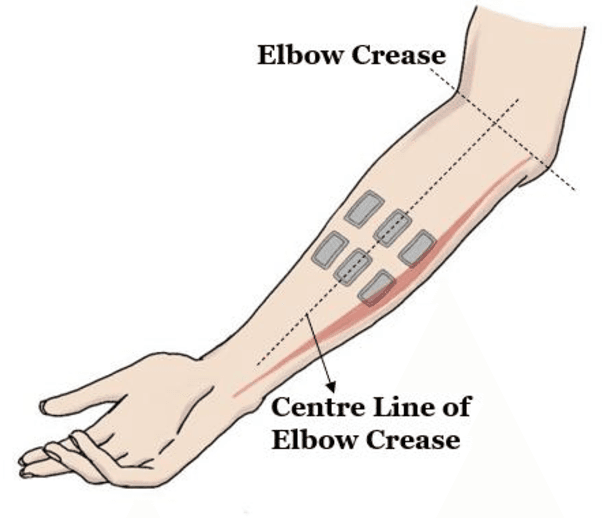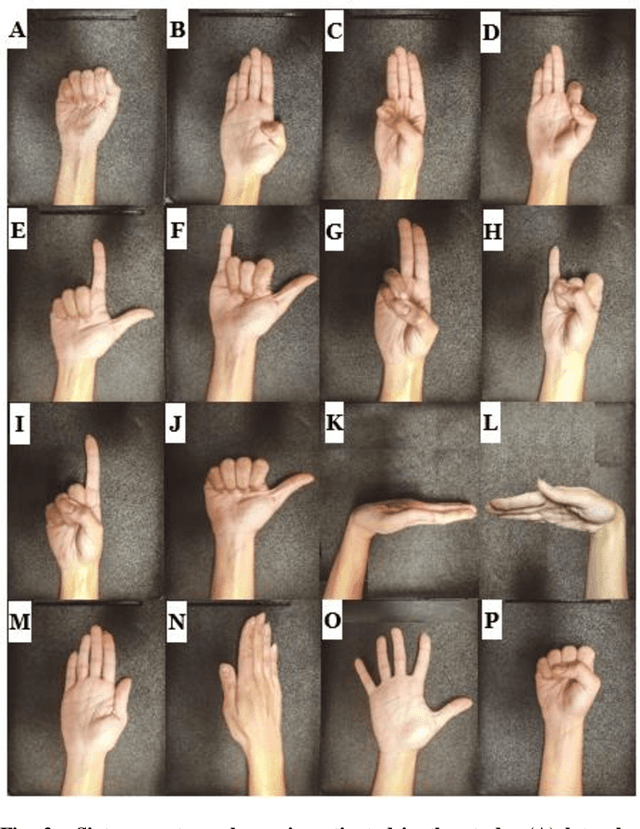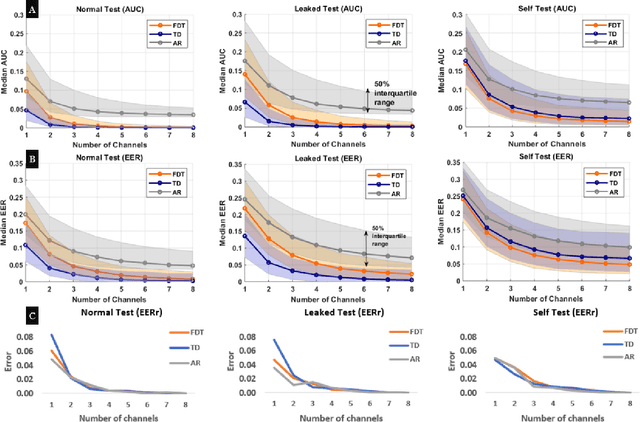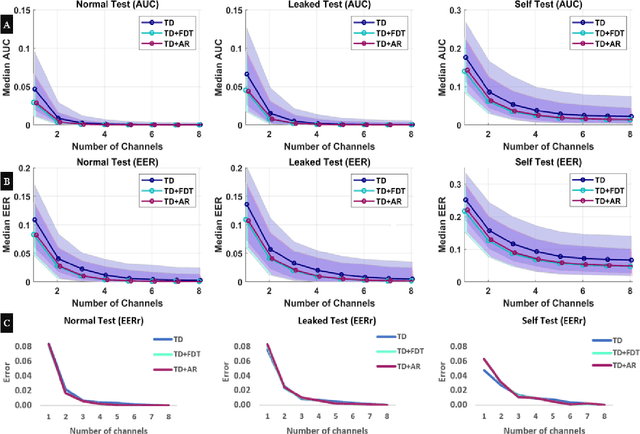Performance Optimization of Surface Electromyography (sEMG) based Biometric Sensing System for both Verification and Identification
Paper and Code
Mar 10, 2021



Recently, surface electromyography (sEMG) emerged as a novel biometric authentication method. Since EMG system parameters, such as the feature extraction methods and the number of channels, have been known to affect system performances, it is important to investigate these effects on the performance of the sEMG-based biometric system to determine optimal system parameters. In this study, three robust feature extraction methods, Time-domain (TD) feature, Frequency Division Technique (FDT), and Autoregressive (AR) feature, and their combinations were investigated while the number of channels varying from one to eight. For these system parameters, the performance of sixteen static wrist and hand gestures was systematically investigated in two authentication modes: verification and identification. The results from 24 participants showed that the TD features significantly (p<0.05) and consistently outperformed FDT and AR features for all channel numbers. The results also showed that the performance of a four-channel setup was not significantly different from those with higher number of channels. The average equal error rate (EER) for a four-channel sEMG verification system was 4% for TD features, 5.3% for FDT features, and 10% for AR features. For an identification system, the average Rank-1 error (R1E) for a four-channel configuration was 3% for TD features, 12.4% for FDT features, and 36.3% for AR features. The electrode position on the flexor carpi ulnaris (FCU) muscle had a critical contribution to the authentication performance. Thus, the combination of the TD feature set and a four-channel sEMG system with one of the electrodes positioned on the FCU are recommended for optimal authentication performance.
 Add to Chrome
Add to Chrome Add to Firefox
Add to Firefox Add to Edge
Add to Edge